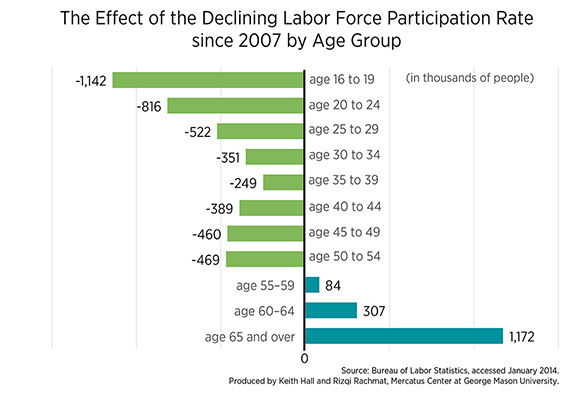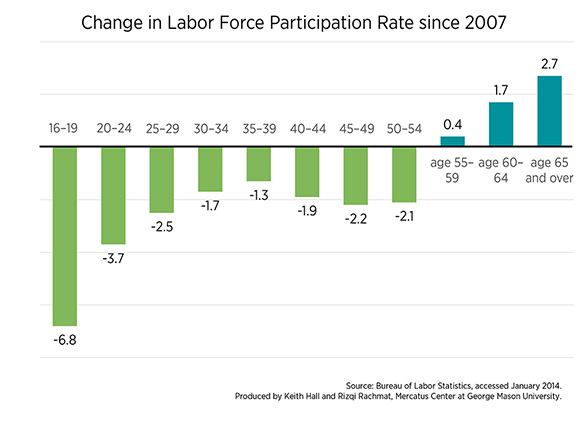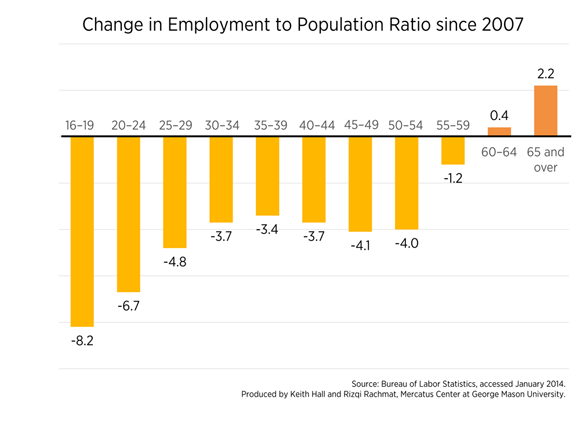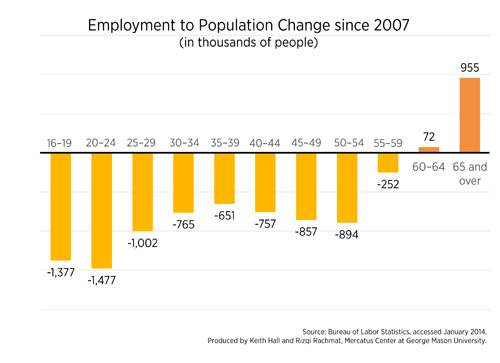- | Government Spending Government Spending
- | Data Visualizations Data Visualizations
- |
More to Declining Labor Force Participation Than Aging Population
The aging of the population is not the sole contributing factor in the decline in labor force participation since 2007, contrary to what some have suggested. The participation rate has declined for every age bracket below 54 years old. The effects of these declines can be seen in the figure below. For each age range, we have calculated how much the labor force would need to increase to return to average participation rates in 2007. There would be an additional 4.4 million people under the age of 55 in the labor force today if the average participation rate reverted to 2007 levels.

The aging of the population is not the sole contributing factor in the decline in labor force participation since 2007, contrary to what some have suggested. The participation rate has declined for every age bracket below 54 years old. The effects of these declines can be seen in the figure below. For each age range, we have calculated how much the labor force would need to increase to return to average participation rates in 2007. There would be an additional 4.4 million people under the age of 55 in the labor force today if the average participation rate reverted to 2007 levels.
The declining labor force participation was particularly evident in 2013. Over the course of that year, the working-age population grew by over 2.2 million people. However, the labor force fell by 660,000. To have kept pace with the population growth, the labor force should have grown by 1.4 million over the year. This means that all of the drop in the unemployment rate in 2013 (from 7.9 percent to 6.7 percent) was from falling labor force participation.
Supplemental Charts



